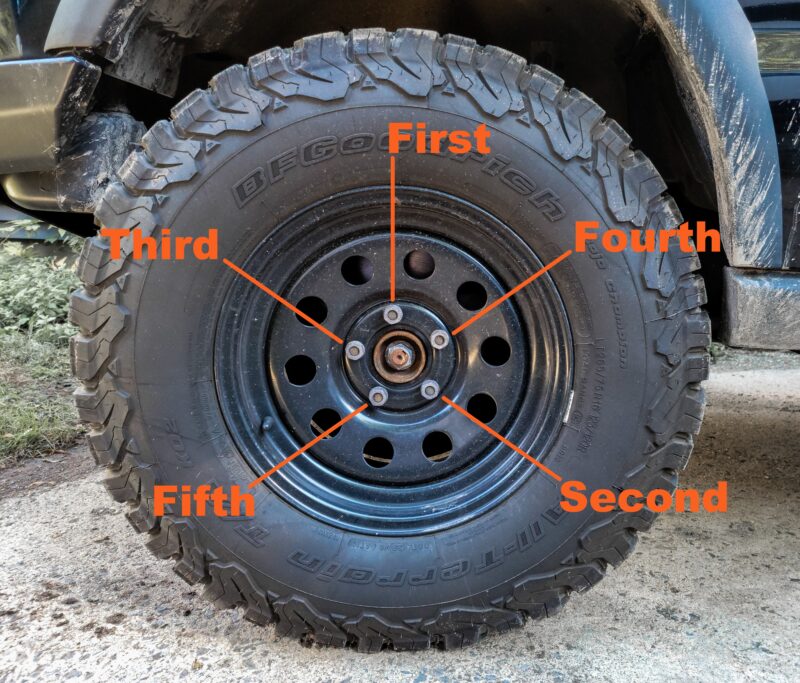9 Steps On How To Change a Flat Tire Like a Badass
I recognize that changing a tire might not be the most badass skill in the world for most of us to handle. Especially if you’re home and have access to the tools in your shop. But, if you don’t know how to change a flat tire, the job might seem intimidating—especially on the side of the road. And since the goal of The Graying Area is to be a source of information for men who don’t suck, it’s definitely worth going over.
For those of you that might be a bit more versed on the subject than the reader who’s learning for the first time, leave some tips for them in the comments. I’m pretty damned good at changing my own tires, but you might have a tip worth sharing.
Note: This post contains affiliate links. If you purchase something through one of those links, I will make a commission.
Table of Contents
- How To Change a Flat Tire
- How To Change a Flat Tire Step 1: Get to flat ground
- How To Change a Flat Tire Step 2: Put in park, engage the parking brake, and prop the tire
- How To Change a Flat Tire Step 3: Locate the spare tire, the tire iron, and the jack
- How To Change a Flat Tire Step 4: Loosen the lug nuts
- How To Change a Flat Tire Step 5: Lift the vehicle with the jack
- How To Change a Flat Tire Step 6: Remove the tire
- How To Change a Flat Tire Step 7: Place the new tire on the vehicle
- How To Change a Tire Step 8: Lower the vehicle
- How To Change a Flat Tire Step 9: Tighten the lug nuts
- Final Thoughts
- Changing a Flat Tire FAQs
How To Change a Flat Tire
Alright, some shit happened. You’re driving down the road, and you hit a large pothole. Or, maybe some guy who sucks left glass or nails in the street (I did this once recently, but I cleaned up every last nail). Whatever the case may be, you start to feel the vehicle pull to the left or the right, or maybe a loud hum is coming from the rear of the vehicle. Whatever the case may be, you have a flat tire.
Luckily, learning how to change a tire is very simple, and with a bit of background, you’ll be back on the road in no time at all. Here we go:
How To Change a Flat Tire Step 1: Get to flat ground
Before you attempt to change your tire, be sure to get to flat ground. You’re going to be lifting the vehicle in the air and changing its center of gravity, and sloped ground is a recipe for disaster. The car can roll forward or backward or pull off the jack to the left or right if you don’t find flat ground. Also, make sure the ground is pavement or concrete. Otherwise, the jack might sink into the dirt. If you don’t have a choice, find a large flat rock that you distribute the weight of the jack over softer dirt, but do this at your own risk! A safer way to handle this is to keep a jack plate in your vehicle, available on Amazon.
Don’t worry about doing any further damage to the flattened tire by moving the vehicle. It’s far more important that you get to a stable area than preserving a tire you already damaged.

How To Change a Flat Tire Step 2: Put in park, engage the parking brake, and prop the tire
The last thing you want is the vehicle to roll off the jack. Even if you don’t get hurt, slamming a hub and rotor on the ground is never a good thing, and it can be nearly impossible to get the jack back underneath. So, be sure to put the car in park and engage the parking brake.
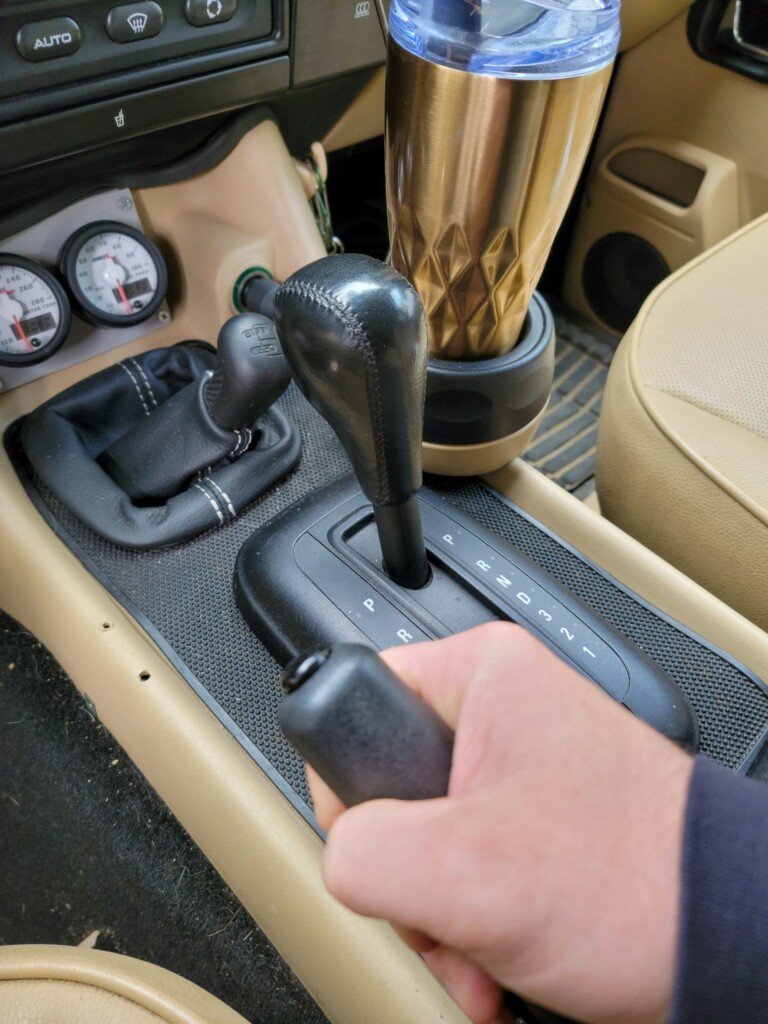
One other tip that can be a big help is to prop the other tire on the same side of the vehicle as the flat. You can use a rock, a log, or if you’re lucky, some vehicles (like my Land Rover) come with tire chocks (you can buy a roadside set here, on Amazon). Jam it between the tire and the road and give it a quick kick to wedge it in place.
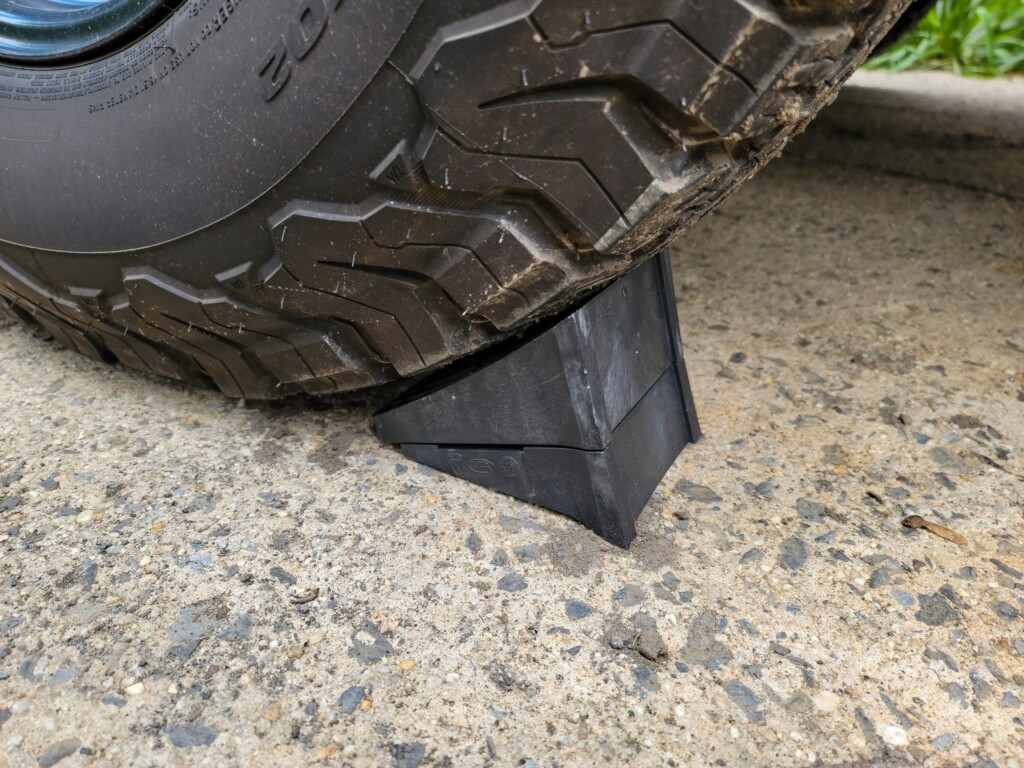
If you have a safety kit in your car, dig it out. Throw on your vest, place the reflective markers out, and do whatever you can to be as safe as possible. If you don’t have a roadside safety kit, it might be time to purchase one for your car (available on Amazon). These kits usually have reflective vests, triangles, tools, zip ties, jumper cables, and other random things you might need on the side of the road.
You might also consider adding a tire inflator to your tool kit.
How To Change a Flat Tire Step 3: Locate the spare tire, the tire iron, and the jack
Spare tires are usually very easy to find. They’re either in the trunk, on the back of the vehicle, or underneath the rear end. Tire irons and jacks, on the other hand, can be pains in the ass.
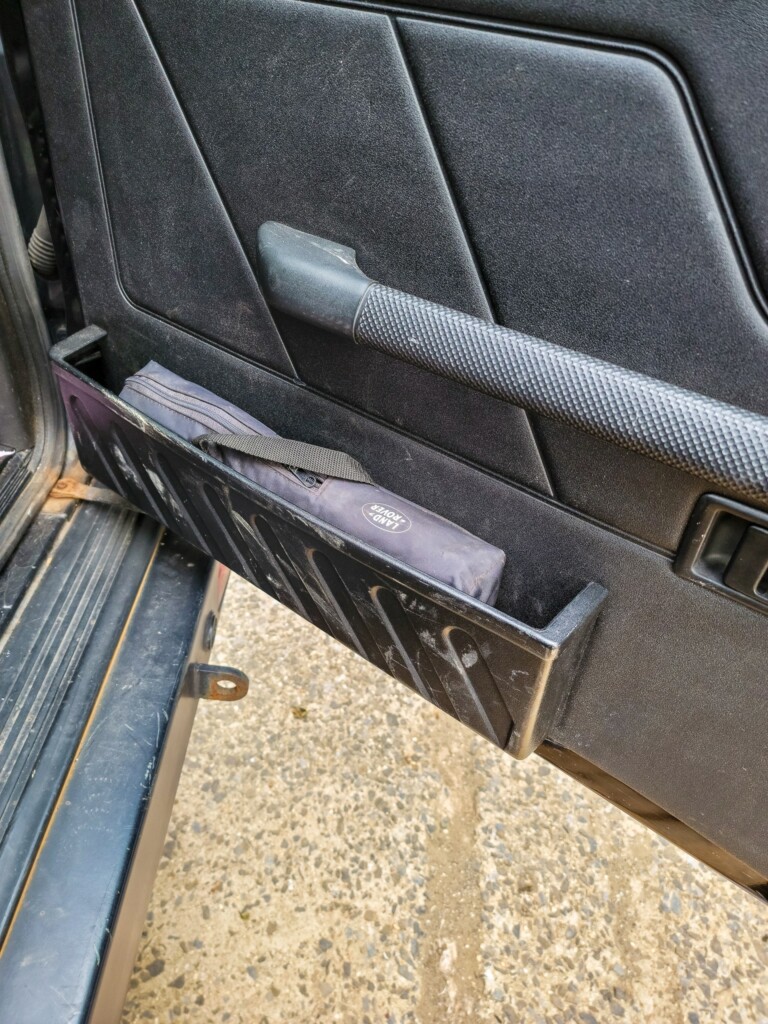
Some tire irons and jacks sit in the spare tire well in the trunk, or within styrofoam surrounds in the truck. Others might be under the front passenger seat. On occasion, you can even find the jack under the hood. If you don’t know where it is, check your owner’s manual.
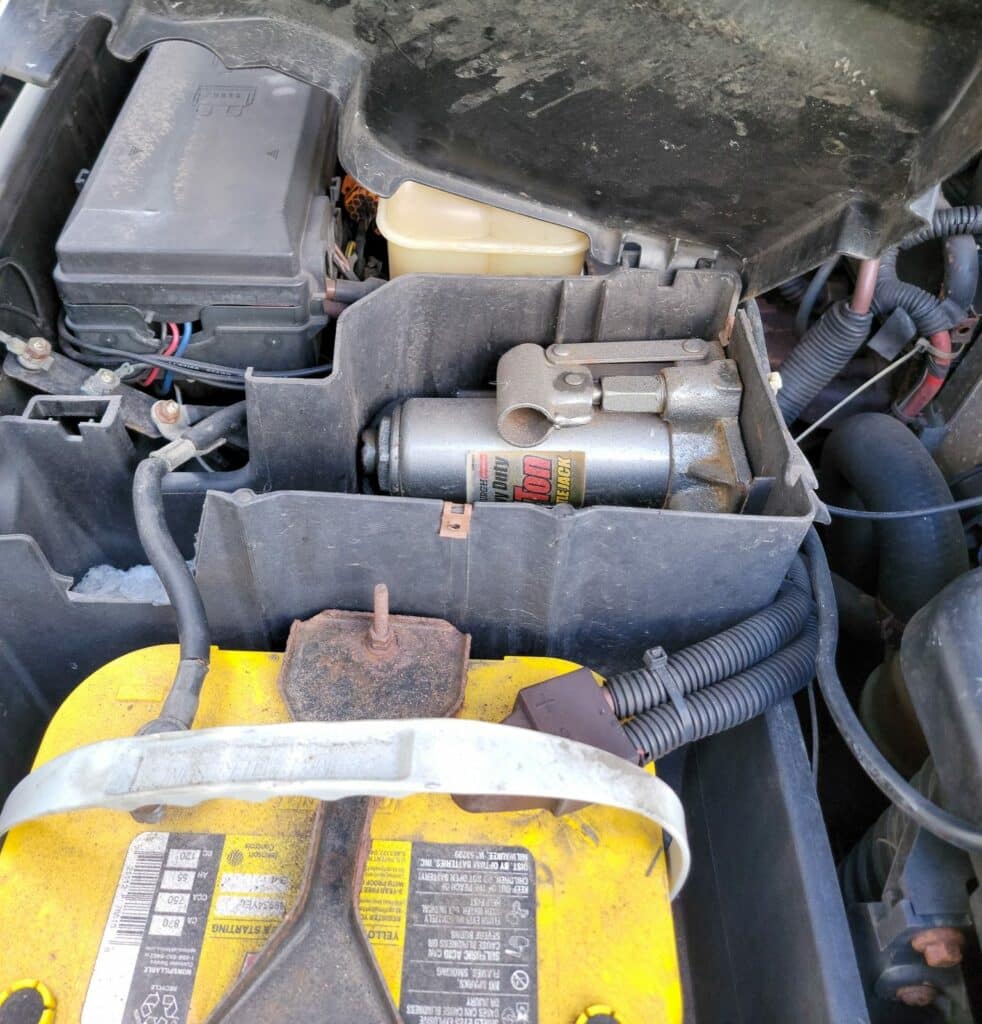
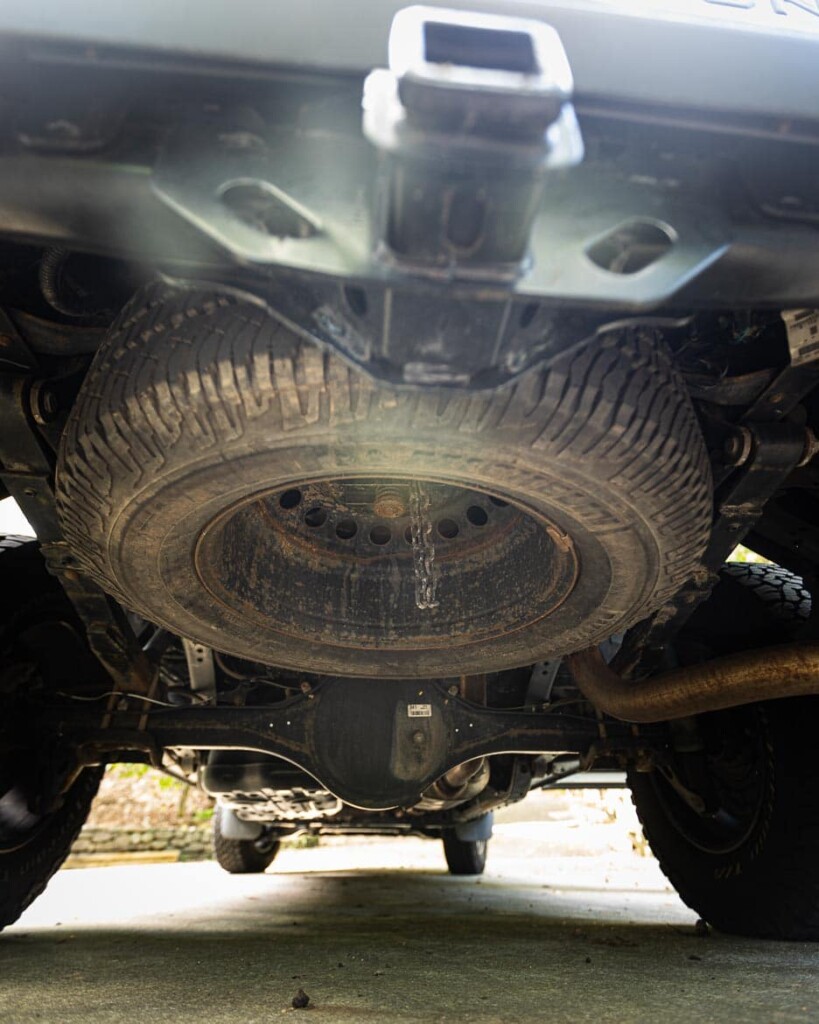
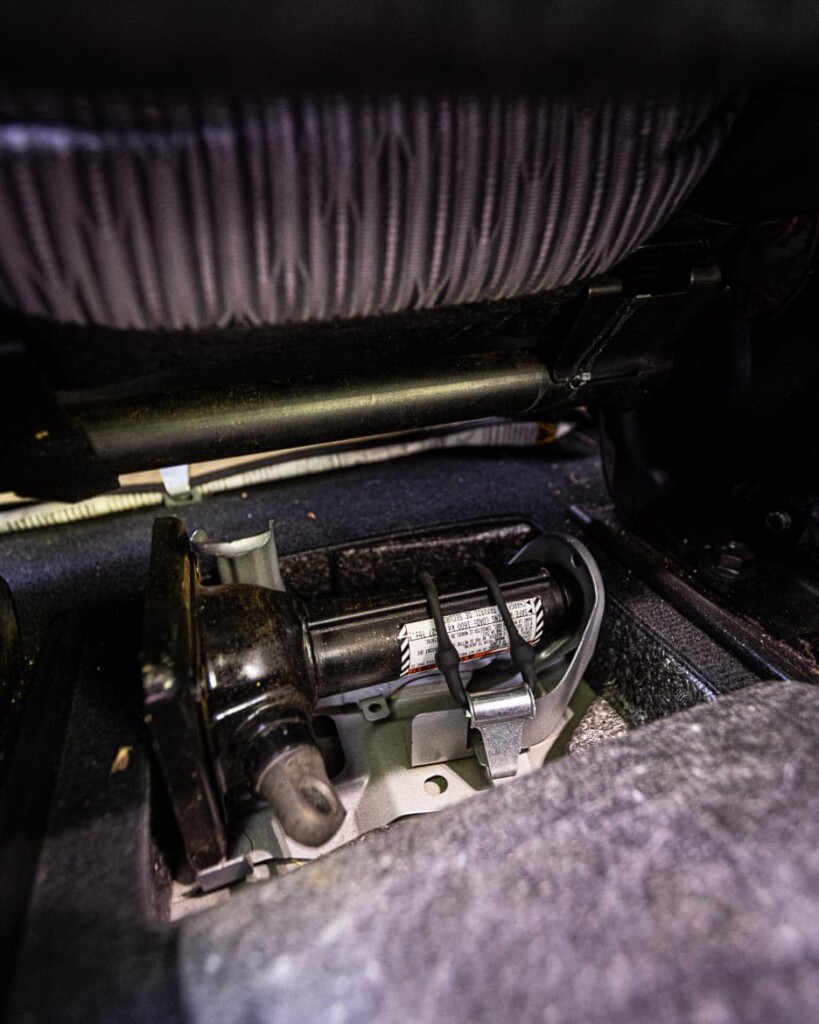
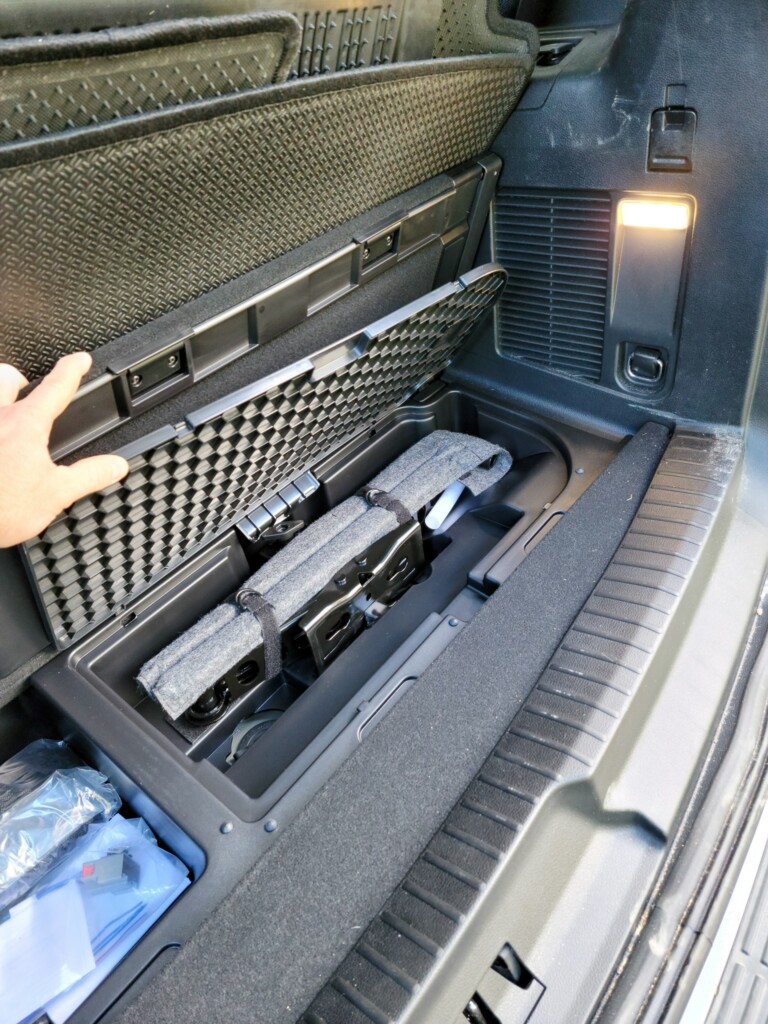
How To Change a Flat Tire Step 4: Loosen the lug nuts
Before you lift the vehicle, use the tire iron to loosen the lug nuts. The friction between the tire and the ground will prevent the wheel from spinning freely, making the job much easier. Also, you only want to loosen the lug nuts, not remove them. DO NOT REMOVE THEM COMPLETELY. Otherwise, the tire can come loose while still bearing the vehicle’s weight.
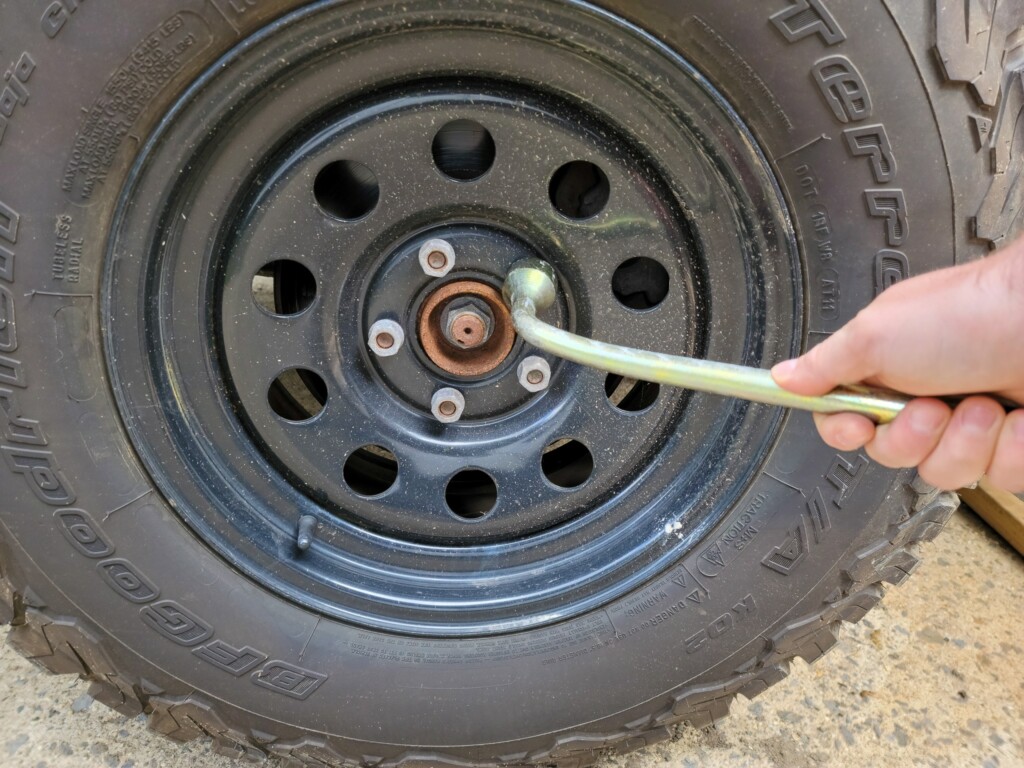
Note that lugnuts can be a son-of-a-bitch to remove, so you might have to get creative. My first suggestion is to place the tire iron on the lug nut so that its handle is pointing in the 3 or 4 o’clock position and lifting upward. This allows you to use your legs. But, if that doesn’t work, switch the tire iron so that the handle is pointing at 9 or 10 o’clock, and use your bodyweight to bounce up and down on the handle. Is this safe? No. But neither is sitting on the side of the road with a flat tire, so don’t be a pain in the ass.
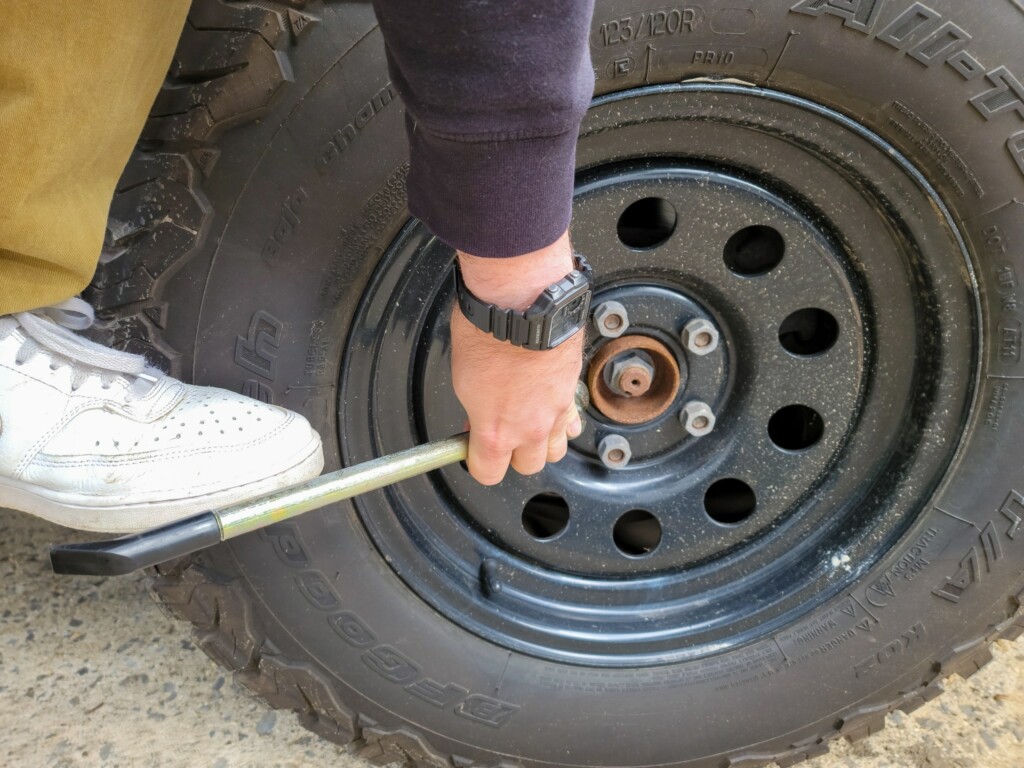
How To Change a Flat Tire Step 5: Lift the vehicle with the jack
Remove the jack from its home and assemble all the pieces. Usually, this requires slipping a few segments of handle together to make one long handle. The tire iron typically slides over one end, acting as a wrench or handle.
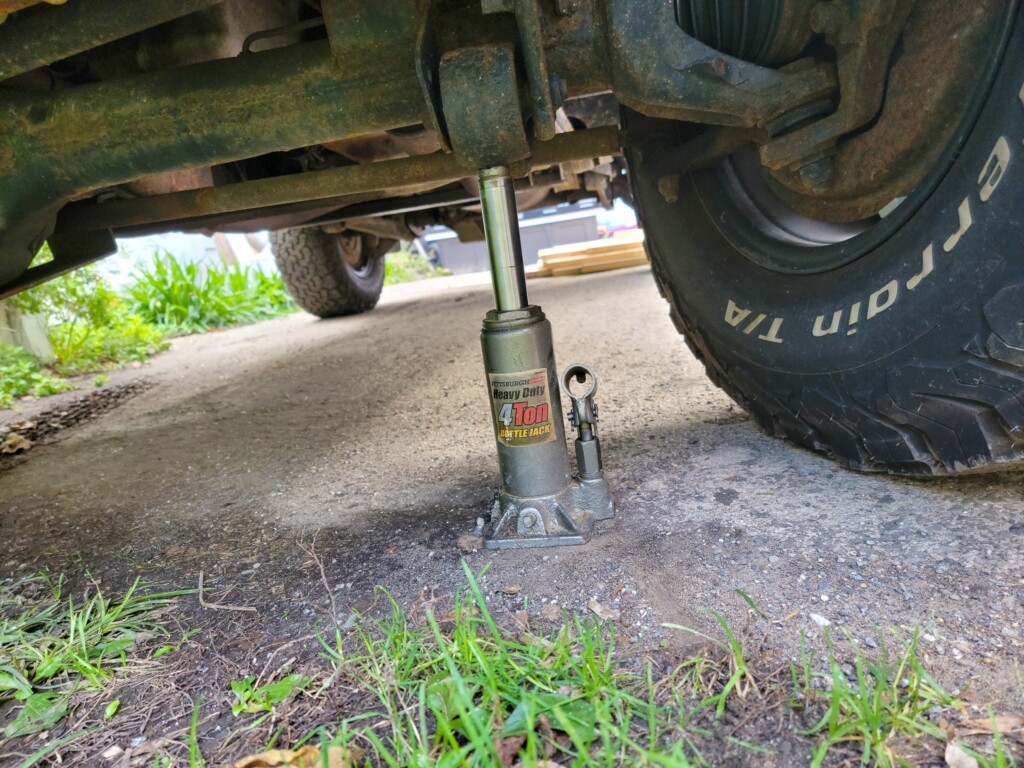
Each vehicle has specific jacking points, so position the jack per the vehicle manufacturer’s instructions. These points might be on the frame, a large seam on the underside of the body, or on an axle, depending on the year and style of the vehicle. Turn the handle slightly to lift the jack into position without lifting the vehicle. Ensure that the jack is sitting firmly on the ground and firmly on the jacking point before continuing to lift the vehicle.
If you have a used vehicle that didn’t come with a jack, a flat is a shitty time to find out. Go check your vehicle, and if you’re jackless, consider purchasing a new bottle jack (I know I have to, available on Amazon).
How To Change a Flat Tire Step 6: Remove the tire
With the vehicle off the ground, remove the lug nuts completely. If the wheel and tire don’t come off immediately, give the tire a few light kicks. Be careful not to kick the jack, and be sure that you don’t have a leg, foot, arm, or hand underneath the vehicle when kicking.
Immediately after removing the tire, place it under the side of the vehicle near where you’re working. The wheel can become a safety device that catches the vehicle if it falls off the jack. Not only will this save you from broken legs, but it will also make lifting the vehicle again possible, should it fall.
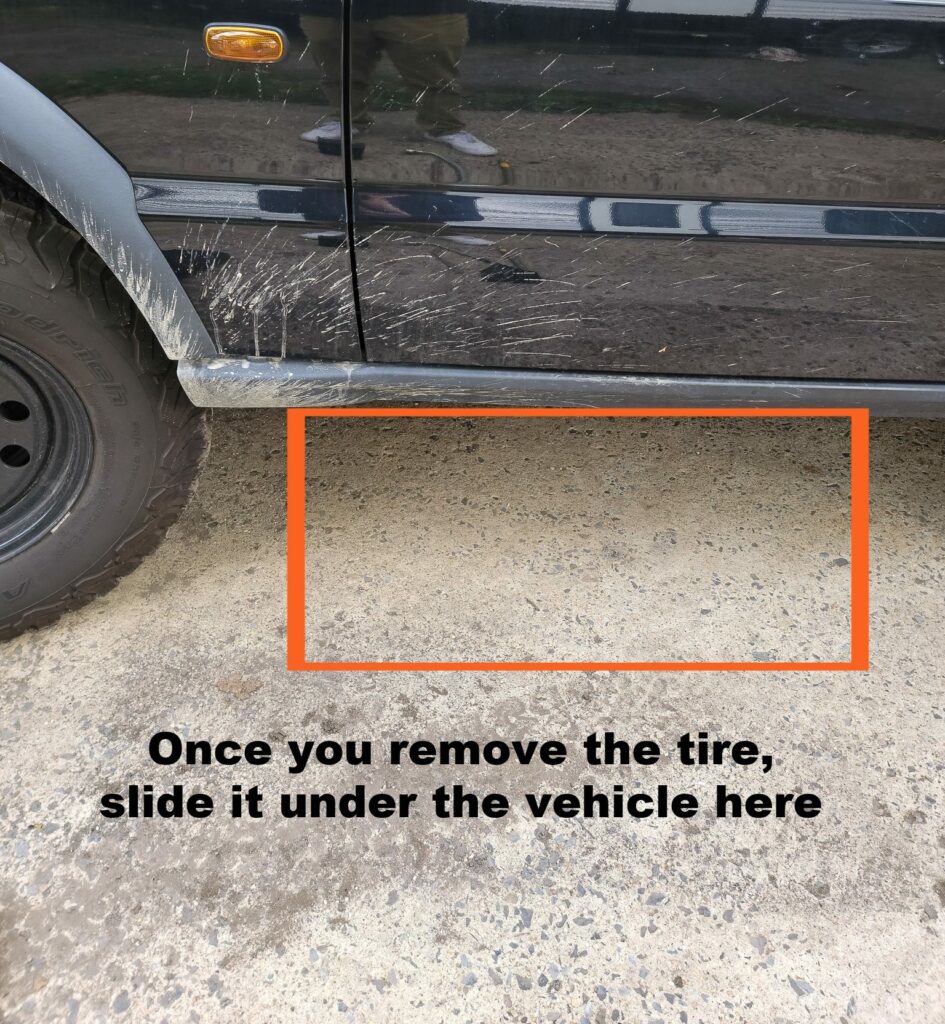
How To Change a Flat Tire Step 7: Place the new tire on the vehicle
This can be one of the most challenging parts of changing a tire, as tires and wheels are heavy, and lining them up with the lug nuts can be frustrating. I developed a foolproof method over years of experience, and it works with all but the biggest off-road tires:
- Sit on your butt facing the lug bolts (or wheel studs) and put your feet out in front of you
- Position the spare tire in front of the hub and lug bolts, and tuck one foot on each side of the tire
- Using your feet and legs, lift the tire into position and steer it over the lug bolts with your hands
- Place one lug nut on a lug bolt and tighten it a few threads
With that done, the tire should be on the lugs, so continue screwing on lug nuts. Don’t worry about getting them tight; just keep threading them on until they’re snug. You want the tire to sit on the hub as squarely as possible, so tighten each lug a few turns at a time; this way they all snug down at relatively the same time. You might have to push the bottom of the tire into the vehicle slightly to get the lug nuts on the lower lugs.
How To Change a Tire Step 8: Lower the vehicle
Remove the flattened tire from under the vehicle. With the lug nuts snug, use the jack handle to lower the vehicle back to the ground. Be sure not to lower the tire onto any of your tools, otherwise, you’ll be lifting it again.
How To Change a Flat Tire Step 9: Tighten the lug nuts
At this point, you can tighten the lug nuts completely. You don’t have to use your bodyweight, but you want to make sure they’re tight, and you need to do it in a star-like pattern:
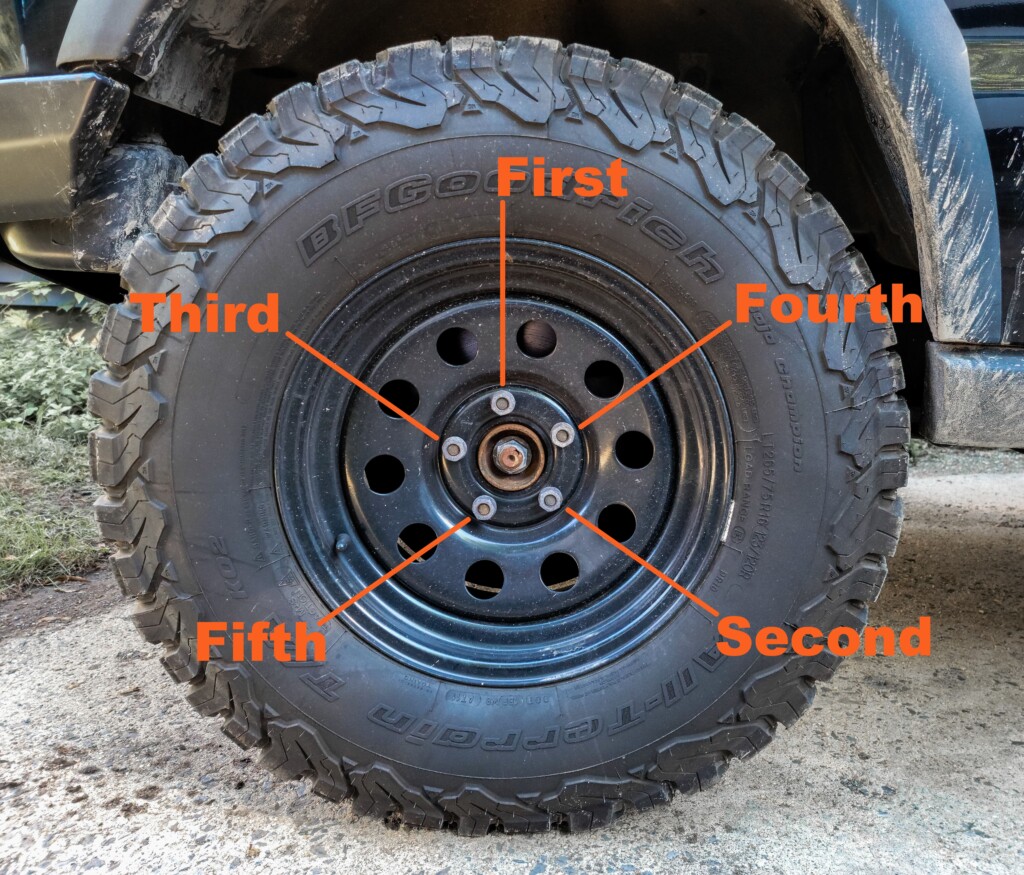
- Tighten the lug nut at the top
- Tighten the lug nut at the bottom-right
- Tighten the lug nut at the top-left
- Tighten the lug nut at the top-right
- Tighten the lug nut at the bottom-left
If you have six lug nuts, follow a similar pattern, crisscrossing as you go. The same for vehicles with four lug nuts. With that, pack up your flattened tire, jack, and tire iron and remove the tire wedge. You’re all set.
Final Thoughts
Note that just because you got a flat doesn’t necessarily mean your tire is garbage. You can plug and patch a tire very easily, as long as the damage is in the tread and not the sidewall. A tire plug kit includes patches and plugs (available on Amazon), and they’re pretty easy to use.
But, if you do need a new set of tires, let me suggest BF Goodrich and Hankook as my brands of choice for truck tires and Michelin for car tires. TireRack tends to have pretty good deals, so be sure to check out their pricing.
It’s not that I don’t think the readers of The Graying Area don’t know how to change a tire. But, with a few extra tips, this article can become a resource for guys who are unsure of how to handle the job. So I’m inviting you guys who know how to get it done to leave a few helpful tips in the comments below.
Changing a Flat Tire FAQs
What are the steps to changing a tire?
Changing a tire isn’t terribly difficult, and the steps are as follows:
- Get to flat pavement or concrete
- Put the car in park, engage the parking brake, and chock the tire
- Locate the spare tire, tire iron, and jack
- Loosen the lug nuts
- Lift the vehicle
- Remove the tire
- Place the new tire on the vehicle
- Lower the vehicle
- Tighten the lug nuts
Can you replace a tire by yourself?
Changing a flat tire to a spare tire by yourself is very easy, and the steps in this article will explain it. Removing an old tire from a wheel and replacing it with a new one is more difficult, but it is possible to do it yourself. However, this depends on the type of tire. Low-profile tires are very stiff and difficult to work with, while larger truck tires are often more pliable.
The trick is seating the bead of the tire, which can be very difficult to do at home with a standard air compressor. However, some off-roaders seat their tires with combustible gas, and it’s freggin awesome to watch. Check it out:

